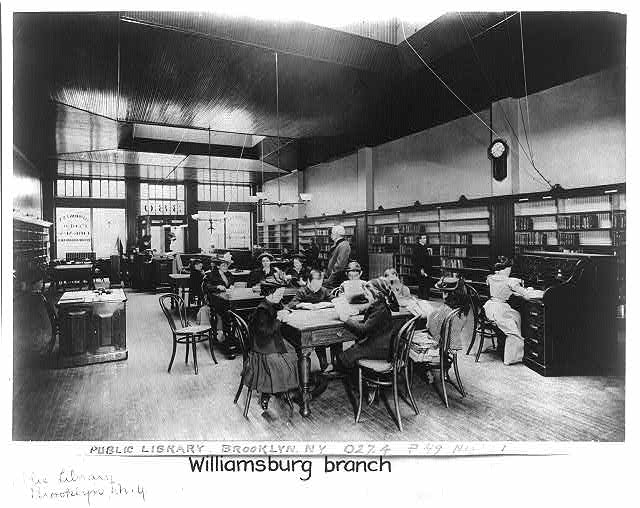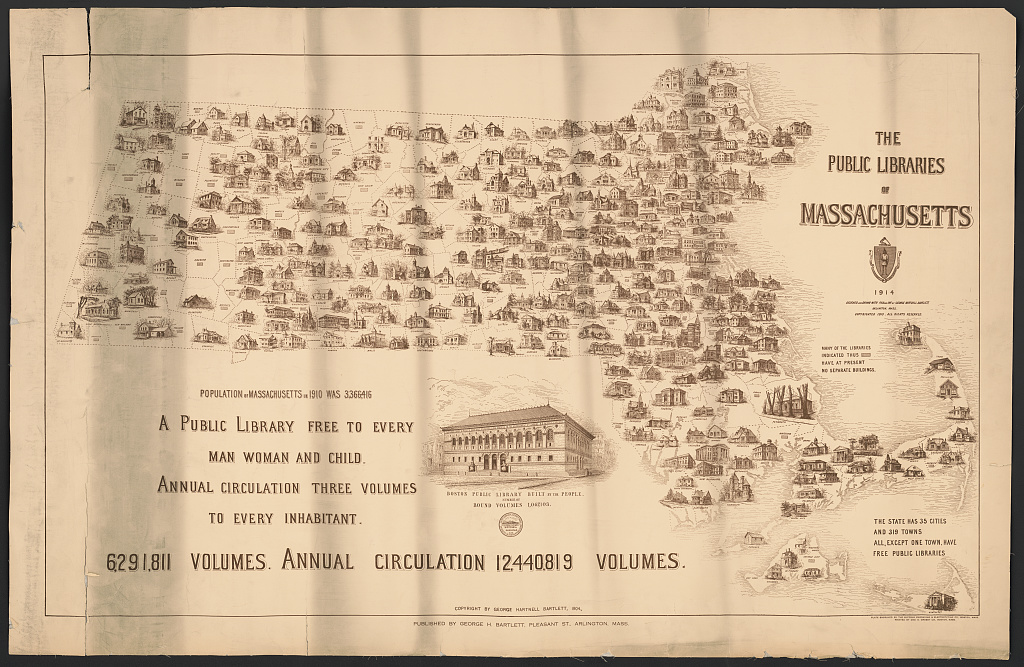An Analysis of Public Libraries as Spaces for Children Through Scholarly Research
Libraries have served as public places in the community for a long time. They provide books and other programs for the community to inspire a love of reading, education, and knowledge on an accessible, influential basis towards members of the community, especially children.
Since the mid-19th century, libraries have been popular sources of books to the community, although they did not become inclusive towards children until the late 1800s and especially serviceable to them until the Progressive movement of the early 1900s (Higgins). The purpose of libraries is to serve the community by encouraging reading and providing resources in a physical space. Through this service, libraries act as “a force for social justice”, a public institution meant to educate and entertain its patrons, and one that has great influence in the society that utilizes them (Higgins). When libraries created spaces specifically for children, they acknowledged a distinct separation between adults and children and imposed their views of childhood into these spaces. “Children’s rooms” designated a responsibility on children to take care of or at least follow the rules for their own books and space in the library but also provided them with freedom and lent to the social aspect of the library (McDowell – Children’s Room). These areas were especially important in urban cities or towns, where children did not have much space to call their own (McDowell – Children’s Room). Whereas before the introduction of children’s rooms, libraries were mostly spaces for scholars and adults, having their own physical niches of the library allowed children physical space to read, gather, and share in reading together.
Having the space to check out books to read was very important for children. Reading is a hobby that keeps children entertained while also helping them become knowledgeable.

. New York, 1904. [Not After] [Photograph] Retrieved from the Library of Congress
The benefits of reading include critical thought, absorption of information and important messages, and healthy relaxation (Higgins). In libraries, children could figure out the types of reading they could enjoy by having access to a wide variety of books and to librarians. Whether they brought themselves to space, or were brought by their parents, libraries provided an expansive freedom for children to explore, physically and intellectually. However, children were not without guides or authority in the library. Librarians had an interesting and close relationship with children, as they were able to help choose books specific children were interested in (McDowell – In Children’s Words). This individualized treatment and selection allowed for “spontaneity” and “individual flair” towards each child, which would encourage them to pursue their interests, be themselves, and of course, return to the library for another book. Specifically, reading the right books was encouraged by librarians, as they wanted to promote books that would lend themselves towards bettering the children in some way. They knew which adventure book would also contain value and would provide those books to children interested in adventures, acting both as a source of help and a source of bias (McDowell – Toward a History). In a library, there was choice, which was important as children had a diverse range of interests in which books they liked, and often lacked choice in other aspects of their life. One 1928 study surveyed 2500 children asking which book was their favorite, and 925 different books were given as answers (McDowell – Toward a History). Children’s diverse needs and interests were met by the books in the library, and children were usually able to access them, no matter what their social class or status.
The public nature of libraries means that they had different impacts on the social groups of children who belonged to them. One goal of influencing a child’s reading choices through libraries was to Americanize immigrant children who would learn to pride in the American, or at least written in English, books they were reading (Higgins). Through the promotion of these books and the selection of which would line the library shelves, librarians played a role in pushing immigrant children further from their cultures and greater into the American way of life. Librarian-child relationships for immigrant children allowed them interaction with an American adult that wasn’t a teacher, and who could help with societal integration in a way other adults they knew could not (McDowell – In Children’s Words). In Boston, librarians like Edith Guerrier helped immigrants learn to read and assimilate into American culture through their reading and through other library sponsored programs such as sewing classes or pottery groups (Bausman). Some librarians did hold prejudiced views against children of certain groups but would do their best to suit their needs and push them towards the American values they held (McDowell – In Children’s Words). Librarians also chose which books to include in the library, a power where they could invoke their bias or not, by choosing what representations of social groups were included in their collection. African American children were able to see books that represented them for who they are, not harmful stereotypes, because of librarians choosing books by black authors or ones including non-caricaturized black characters (Tolson). However, in many other libraries, books containing white American ideals were what was pushed onto children by librarians. Furthermore, in many Southern libraries, certain usages of public libraries were restricted or segregated until the 1950s (Hanbury). Despite being influenced by the bias of society, the community of the library was diverse at the time, with children of many different groups learning to share their resources and knowledge together.

Children all experienced childhood differently and therefore had different needs from the library. Some children, especially urban ones, needed the physical space for quiet or freedom, and others relied on the resources that they would have been unable to have access to if not for the library.
Librarians helped children with more than just finding a specific book; they encouraged reading and individuality, as well as integration. Immigrant children were influenced by the books they read, chosen by librarians, and were instilled with American pride, cultural expectations, and language skills through these choices. Going to the library was equal and accessible to many and encouraged a social aspect to reading united through communities. They provided physical space for children to gather and enjoy reading together. Children used books to bond with each other, to see themselves represented in media, and to think more deeply about the world around them because of the influence of the public library.